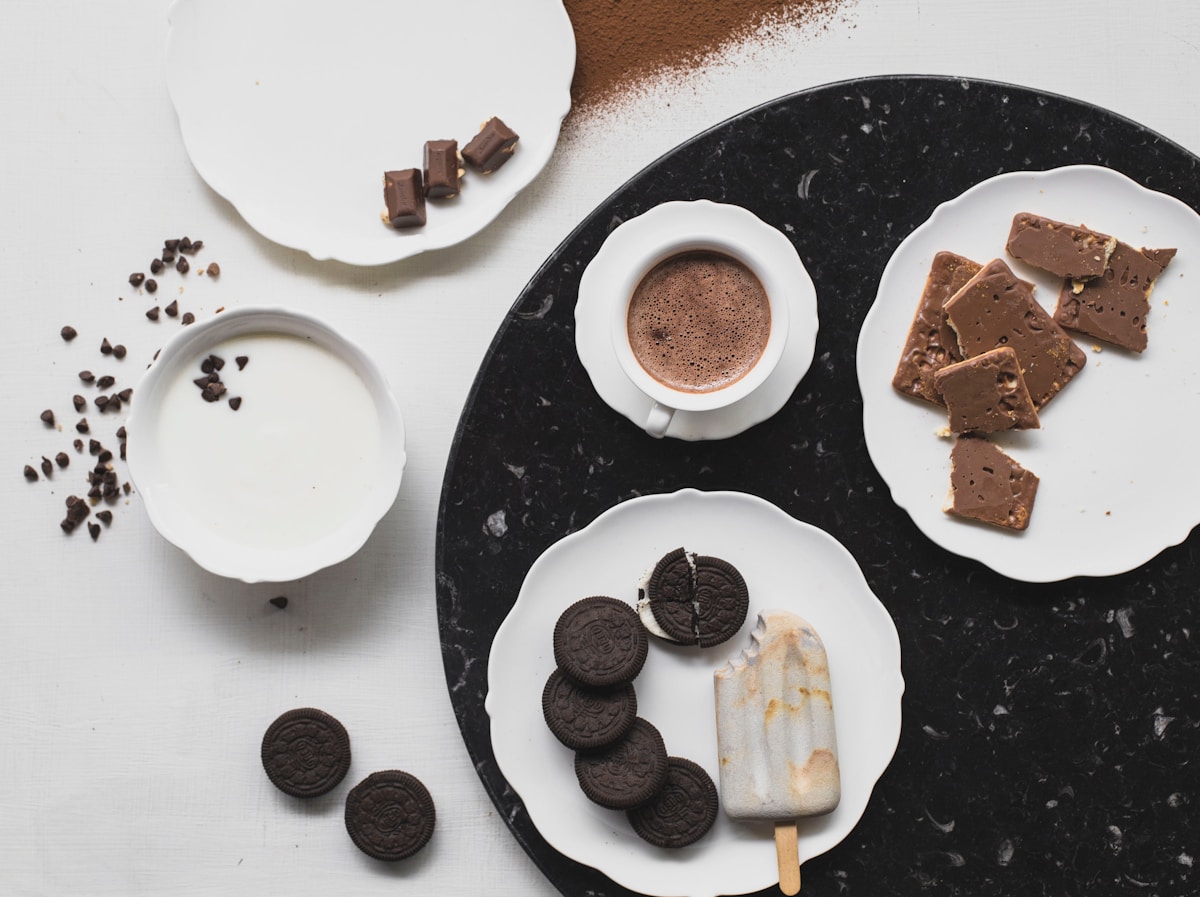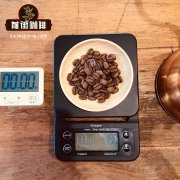The security code for caffeine intake. What is caffeine?

Professional coffee knowledge exchange more coffee bean information please follow the coffee workshop (Wechat official account cafe_style)
Recently, a case of sudden death of arrhythmia caused by a 16-year-old who drank three caffeinated drinks within two hours in the United States has attracted public attention. Daily life is full of all kinds of caffeine drinks and foods. in addition to coffee, tea, energy drinks, some carbonated drinks, chocolate and so on all contain caffeine. How much caffeine can people consume every day? so it won't be harmful to your health?
This article was written by Zhang Yueying, secretary general of Taiwan International Life Science Association, a legal person of ILSI. It is based on a systematic study published in April 2017 by the North American Branch of International Life Sciences Association and published in the Journal of Food and Chemical Toxicology, supplemented by domestic and international understanding of the management of caffeine content in food and dietary exposure, so as to provide principled guidance for people worried about caffeine overintake.
Caffeine plays an important role in the busy life of modern people. when many people wake up with a cup of coffee in the morning, their blood sugar rises after lunch and their heads feel drowsy, many people want to have another cup of caffeine to refresh themselves. at this time, coffee, tea, carbonated drinks or energy drinks are common choices for Chinese people. Do you know how much caffeine you eat at the end of the day? What is the maximum amount of caffeine that can be consumed every day in order not to cause health hazards? is there a reference criterion?

How much do you know about caffeine?
Caffeine belongs to purine alkaloids. At present, more than 60 kinds of plants are known to contain caffeine, such as coffee beans, tea, cocoa beans, Kola nut (once one of the raw materials for cola beverage extraction), Madai leaves, Guarana and so on. These edible natural raw materials themselves or their extracts are often used in beverage production. The use of caffeine compounds in the food industry is regarded as a flavoring agent in food additives, which must be in line with the norms for the use of food additives. at present, caffeine compounds can only be added to seasoned drinks in China. Caffeine intake will stimulate the human central nervous system, cardiovascular, respiratory system, gastrointestinal, muscle and so on, but also increase the speed of cell metabolism, diuresis and so on. For ordinary people, its action time can be up to 3-4 hours.
The "advantages" and "disadvantages" of caffeine on the health of ordinary people have been widely discussed in different literatures, including boosting spirit, increasing alertness, concentration and responsiveness, reducing cardiovascular and neurodegenerative diseases, and even longevity; "disadvantages" include palpitations, sleep disorders, anxiety, irritability, bone health and gastrointestinal function, and may affect fetal health in pregnant women. However, due to the different strength of the literature evidence, professionals are needed to evaluate the validity of these conclusions and their applicability to individuals. Caffeine is also introduced in the health risk assessment data section of the Food and Drug Administration's "Food and Drug Consumer knowledge Service Network".

ILSI innovates and uses systematic review to explore the potential adverse effects of caffeine intake
The most talked about caffeine research report in the world is the review of caffeine safety assessment written by Nawrot et al in 2003 and peer-reviewed (peer-review), which is the most widely cited internationally and is also used by Health Canada as the basis for recommendations for maximum caffeine intake. Although more than 10,000 caffeine-related papers have been published in the more than 10 years since its publication, there has been no comment on caffeine since it was published.
In view of this, ILSI North America decided to update the classic literature and invited 15 experts, including epidemiology, clinical medicine and systematic review, to conduct a systematic review of the potential adverse effects of caffeine published between 2001 and June 2015 (systematic review). The subjects were adults, pregnant women, adolescents and children. The results of acute toxicity, cardiovascular toxicity, effects of bone and calcium, behavior, development and reproduction were compared with the current version of non-adverse effect caffeine intake of Health Canada.
In clarifying the evaluation of causality, scientific research pays great attention to the classification of the strength of scientific evidence, as shown in figure 1. If the conclusions of scientific research only come from expert opinions (not supported by empirical data), the intensity of such scientific evidence is the weakest; the credibility of integrated analysis, systematic review and randomized controlled trials located in the upper half of the pyramid is higher because they can provide high intensity of scientific evidence, but the resources required for such research, such as funds, manpower and time, are also relatively high.

(Figure 1) Pyramid of Scientific Evidence Strength Grading
ILSI confirms caffeine security code
ILSI North America's rigorous "systematic review of caffeine" was published in April in the Journal of Food and Chemical Toxicology.(Food and Chemical Toxicology ), reconfirming the baseline established by Nawrot et al. in 2003, that there has been no change in the no-adverse-effect or acceptable intake of caffeine in humans, which is 400 mg/day for adults (lethal dose 10 g), 300 mg/day for pregnant women (including pregnant preparations), 2.5 mg/kg/day for adolescents aged 12 to 19 and children aged 3 to 12, simplifying these data to 400 (adults)-300(pregnant women)-2.5 BW (Adolescents and children because the body is not yet fully developed, and the weight changes greatly, so 2.5 times the weight of kg calculation, BW for the abbreviation of Body Weight), this 400-300-2.5 BW is the safe code of caffeine. However, when interpreting this data, the public should note that this series of figures is only used as a reference value for ordinary people. Due to the existence of too many variables among individuals, no data can be completely applied to the safe dose of the whole group. The actual application must be considered according to its own situation. This data should not be regarded as the upper limit or iron law of caffeine intake.
The report's conclusions about the 400 mg daily caffeine recommendation for healthy adults are consistent with the recommendations in the US Dietary Guidelines 2015 - 2020 for 3-5 cups of coffee per day (measured at 240 ml per cup), a caffeine limit of 400 mg, and the European Food Safety Agency's (EFSA) 2015 recommendation of 400 mg. Our current recommendation for caffeine intake is that it is best not to exceed 300 mg per day.

The preparation of caffeine drinks on the market is not standardized, and the caffeine content varies greatly from serving to serving.
The caffeine content distribution of common caffeinated drinks on the market is shown in figure 2. If 400 mg of caffeine is roughly compared, it is about 4 cups of freshly brewed coffee, or 10 cans of carbonated drinks, or 2 cans of energy drinks.
In terms of details, it should be noted when estimating daily caffeine intake that beverages that use natural ingredients as a source of caffeine, such as coffee, although the names of products sold in the market are the same, the caffeine content of each serving varies greatly due to the variety of raw materials, origin, processing methods or the size of the portion. Take the freshly brewed coffee sold in the market as an example, because the size of the portion has not yet been standardized, there are differences in different coffee products, the sources of the beans used and the differences in the preparation process, and so on. As a result, the caffeine content of each cup of freshly brewed coffee may range from less than 100 mg to more than 300 mg.

(figure 2) Distribution map of caffeine content in common caffeinated drinks
Government regulation of caffeinated beverages and food
In August 2006, the Consumer Protection Committee of the Executive Yuan (now the Consumer Protection Council) promoted the labeling of caffeine content per cup of freshly brewed coffee in large chain coffee shops by means of administrative guidance. "Red" is marked to represent caffeine content of more than 201 mg; "yellow" is marked as caffeine content of 101 mg and 200 mg. The "green" label, with a caffeine content of less than 100 mg, provides a simple way for consumers to judge. This sign can be found in obvious places of the store or on the store's website. At that time, it was not required to be marked on the outer packaging of individual products.
In 2007, the Department of Health (now the Ministry of Health and Welfare) announced that beverages containing caffeine in containers or packages should be marked with caffeine content in the outer packaging of individual products, and that caffeine content should not be included in the nutrition label. so as not to make consumers mistakenly think that coffee is nutritious. The caffeine content of liquid drinks is marked by the number of milligrams of caffeine per 100ml. If the caffeine content is less than 20mg, it can be labeled "less than 20 mg/100mL". If it is equal to or less than 20mg, it can be labeled "low caffeine" instead of "less than 20 mg/100mL". Powder products such as "instant coffee in small packages", which need to be brewed, are marked with milligrams of caffeine per serving. In order to make it more effective and easy to identify, the EU stipulates that if the caffeine content exceeds 15 mg per 100 ml of drink, a warning must be added: "High caffeine content is not recommended for children, pregnant or breast-feeding women." there are similar regulations for other non-beverage foods.
It is worth reminding consumers that in addition to caffeinated drinks, some foods also contain a considerable amount of caffeine, such as biscuits, cakes or ice cream made from chocolate. Dietary supplements and medicines may also contain caffeine, but the content is generally not high. If you are a chocolate lover, you should also pay attention to the relevant data while tasting it. For example, a piece of 80g chocolate cake can contain 36 mg caffeine, and a piece of 28g chocolate candy can reach 19mg. But a cup of 240ml chocolate drink is less than 10mg.

[expert comments] read food labels to avoid troubles and caffeine intake on your own
For those who want to enjoy the fragrance of coffee in life, but do not want to be bothered by excessive caffeine intake, the easiest way to prevent it is to grasp the safety password of 400300-2.5BW, learn to read food labels, and make sure that caffeine intake is controlled within the right amount.
In addition to the principle of 4003002.5 BW, healthy adults who do not consume caffeine regularly and women who are pregnant or breastfeeding tend to metabolize caffeine more slowly, and the response to caffeine is relatively longer than that of adults who consume caffeine regularly. The EU Food Safety Agency confirmed that a single intake of less than 200mg would have no adverse effect, and reminded the public not to drink or consume caffeinated beverages or foods, and that caffeine should be separated from alcohol, controlled substances, some drugs and dietary supplements (such as bitter orange extract containing Synephrine synephrine), so as to avoid the risk of abnormal health events.
Important Notice :
前街咖啡 FrontStreet Coffee has moved to new addredd:
FrontStreet Coffee Address: 315,Donghua East Road,GuangZhou
Tel:020 38364473
- Prev

Have you ever had coffee, pulp and tea? Is it coffee or tea?
Professional coffee knowledge exchange more coffee bean information Please pay attention to the coffee workshop (Wechat official account cafe_style) since the rise of hand-brewed and freshly brewed coffee, as well as the increase in tea demand, the boutique coffee industry and the tea industry have changed greatly in recent years. Among them, there is a new exotic drink called Cascara, also called coffee pulp tea, even though this drink
- Next

The correct preservation method of coffee beans, can you put them in cold storage or freezing?
Professional coffee knowledge exchange more coffee bean information Please follow the coffee workshop (Wechat official account cafe_style) many people buy coffee beans and do not often boil them at home, or buy too many coffee beans at a time, leave them for too long, and finally put the coffee beans in the refrigerator. For vegetables and fresh ingredients, low temperature can indeed maintain the freshness of the ingredients and can be stored longer, prolonging the shelf life.
Related
- A complete list of coffee bean names and their meanings! What is Yejia Shefi coffee? Where is Mantelin coffee?
- What grade does Arida Manor Kaduai coffee beans belong to? What treatment is Arida ASD slow anaerobic sun exposure?
- The milk tea cup becomes smaller?! Overlord Tea Girl launches a new "Return to Yunnan" series
- Accused of selling counterfeit and high-priced coffee beans! Well-known boutique coffee brand "Oukelao" bowed and apologized!
- How to make espresso dumplings? Can I eat coffee and glutinous rice balls together?
- Save the unformed and stagnant powder cakes in one second! What is the problem with stagnant water in the powder bowl of the espresso machine?
- What does hand-brewed coffee stop mean? Why is it not recommended to make coffee by hand?
- Is it normal to smell like coffee? Why does coffee smell like alcohol? What's wrong with the strong smell of cold extract ice dripping ice brewed coffee?
- How to solve the problem that hand-brewed coffee extraction takes too long? Why is the water flowing so slowly when making coffee?
- The main points of making Australian white coffee, the proportion details, how does Australian white properly foam and blend the flowers?

